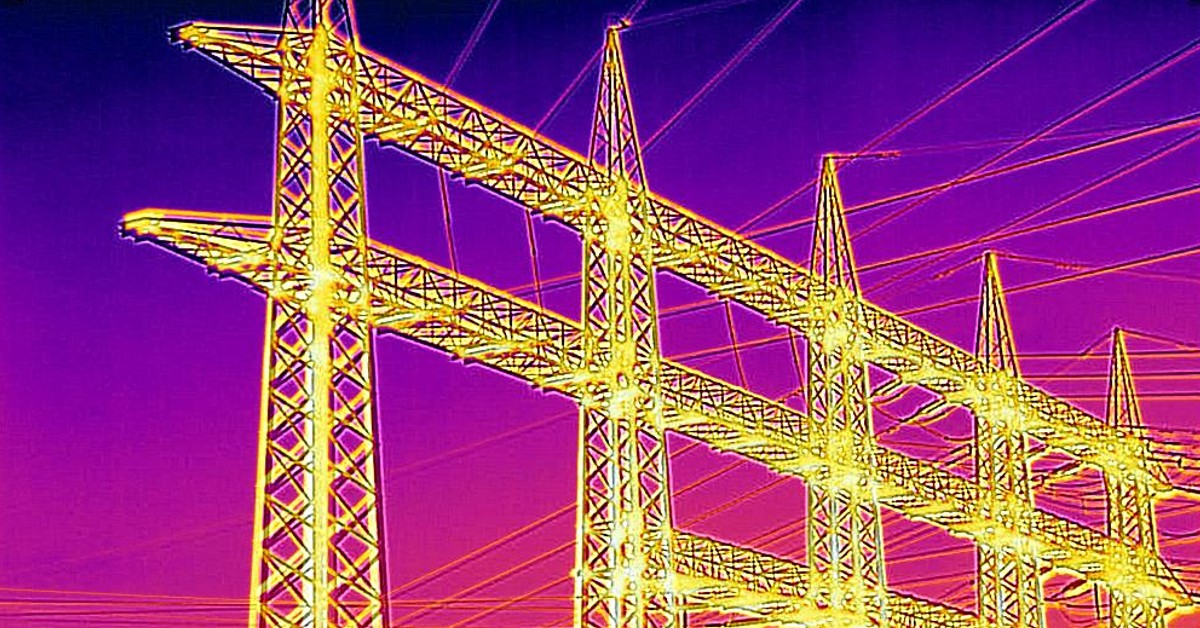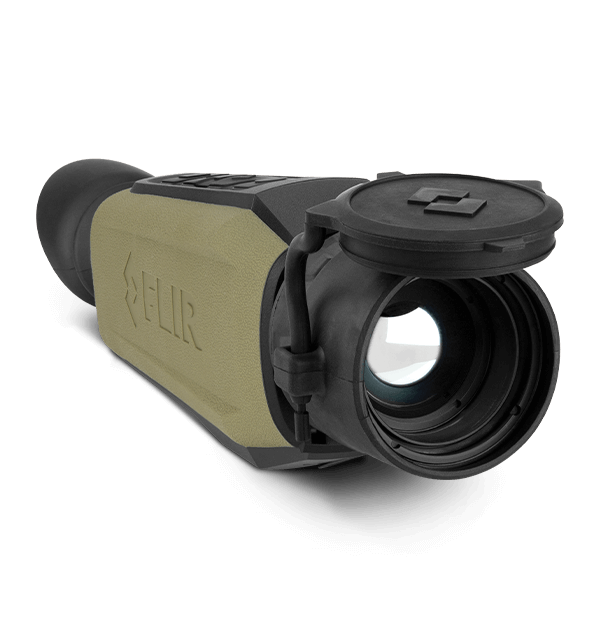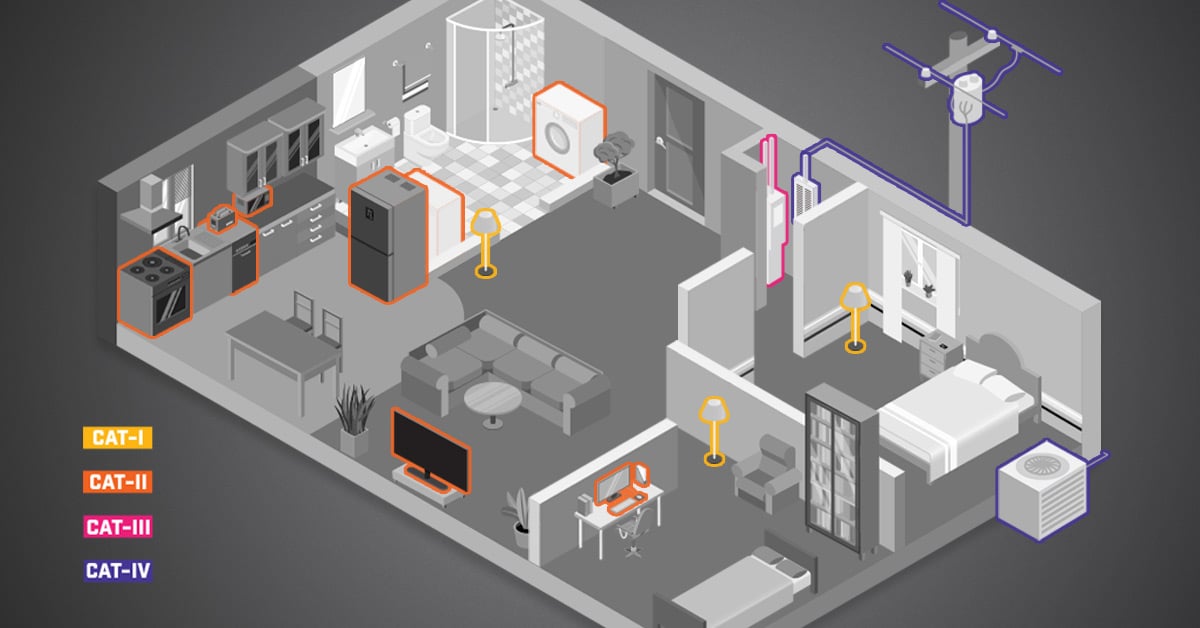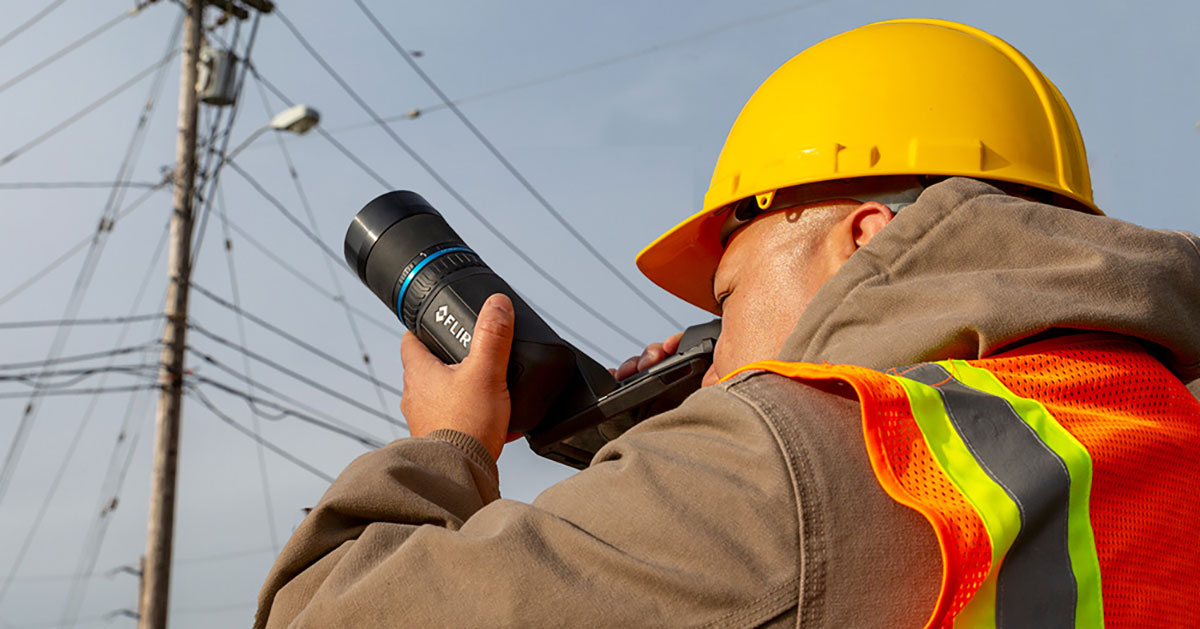How the FLIR Scion Makes for a Stronger First Step in Power Line Inspections

Thermal inspections of powerlines are nothing new. Utility companies frequently employ the use of thermography through helicopter inspections and by equipping their ground inspectors with high power thermal cameras. The problem is that traditional methods, while reliable, are limited in terms of scalability due to cost and time. The FLIR Scion Outdoor Thermal Monocular (OTM) can empower a large-scale workforce with insights of thermal imaging.

FLIR Scion OTM
It's unfortunately not unusual for sections of a city to lose power; the process for finding the source or sources of those failures can be slow and tedious. To find the faulty point in a power line, linemen typically must drive the length of the line in utility trucks and visually search for damage. If an incident occurs at night, a truck will often be equipped with high powered lighting operated by another lineman to point at the power line. It could take several miles of power line inspections before the crew finally finds the problem spot. Thermal imaging can greatly speed up the search process as most power issues will generate heat as they happen.
Cameras that can produce a clear thermal image from a distance allow inspectors to better isolate problems on a faulty power line. The FLIR Scion OTM produces a 60 Hz thermal image at a resolution of 640 × 480, thanks to its FLIR Boson® core. While its total range can be up to 2400 m (1.5 mi), the Scion OTM is capable of targeting hot spots from several hundred meters away, meaning large sections of power lines can be inspected at once and then rechecked more closely once a problem area has been identified. The Scion OTM is designed for one-handed outdoor use, making it easy to carry on lengthy inspections.
Any electrical issue that generates excessive heat will show up on a FLIR Scion, but we’ve highlighted a few common issues in power lines below.
Insulator Failure
Powerline insulators are typically disc-looking objects made of electrically resistant materials used to keep power lines from touching each other or the utility pole. While insulators are designed to withstand mechanical and electoral stressors, they can occasionally break down from corrosion, dust, and moisture buildup. Should an insulator build up a significant amount of any of these materials, the material will heat up as electricity runs through it and appear brighter to the monocular.
Transformers
Transformers convert higher voltage electricity carried by primary wires and lower the voltage for use by customers. They are a key part of low-voltage networks and can cause widespread outages for thousands of customers should they fail. Improper machinery condition, progressive deterioration of electrical or machinery elements, and bad operating parameters can all cause a transformer to overheat. Using a FLIR Scion, you can easily catch a transformer running hotter than usual.
Faulty Splices
Splices that are not properly cleaned of aluminum strands prior to compression will cause higher resistance terminations and can eventually lead to failure. Faulty splices will create greater resistance and appear to be glowing when viewed from thermal imaging. Catching these early on allows repair teams to correct lines before more costly incidents occur.
The FLIR Scion OTM’s long range, high resolution, and relatively lower cost means it’s the perfect tool to equip larger utility teams. The Scion can be the perfect first step in utility inspections and allows utility companies to identify problem areas more easily before moving on to more costly inspection methods.


